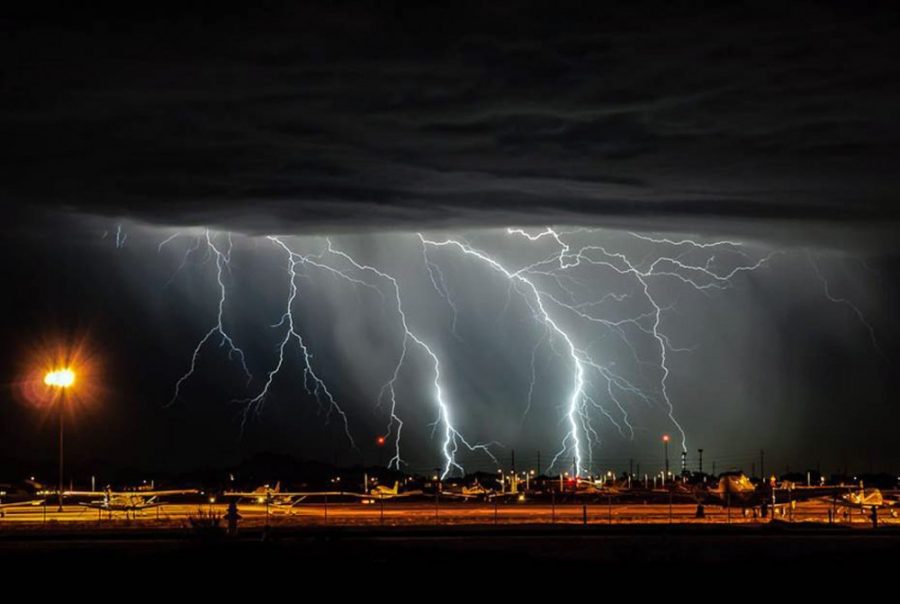There is potential for more lightning strikes in the U.S. during the 21st century, according to a new study published in the journal Science. This increase could mean bad news for wildfire prone regions like Southern Arizona. However, researchers at the UA keyed in on a few facets of this new study that may put everyone at ease.
The study, done by David Romps, an assistant professor at the University of California, Berkeley, and a team of researchers from UC Berkeley and the University at Albany, State University of New York, reported a new mathematical equation that can be used to predict the lightning flash rate across the U.S. using precipitation rates and convective available potential energy with global climate change models. The researchers predict that in this century, there will likely be an approximately 12 percent increase in lightning strikes for each degree Celsius the global temperature rises. In turn, over the course of the century, there will be approximately a 50 percent increase in the rate of lightning strikes, based on their methods.
Outside the realm of wildfires, the science of lightning applies to daily life in a myriad of ways.
“Not only does lightning start most forest fires … [and] is associated with nearly all severe weather events, it is a significant producer of greenhouse gases,” said Ken Cummins, a research professor in the department of atmospheric sciences who is studying applied physical science and detection of lightning. “Yet, there is still so much we do not understand about it.”
Cummins will have an article published in the Journal of Applied Meteorology and Climatology that looks at the variability of lightning strikes in the U.S. between 2003 and 2012.
During this interval, Cummins found an interesting result that may deviate from the article recently published in Science.
“Although my research for this article was not directly correlated with climate-related increases in surface temperature, we did not find an increase [in lightning strikes] over the continental U.S. over the last decade [in our analysis],” Cummins said. Cummins added that there are many complicating factors that go into predicting lightning strikes.
In fact, Cummins and the rest of his affiliates found a decrease of lightning strike occurrences for the continental U.S. as time progressed in the last decade.
“The CAPE-precipitation proxy for lightning sounds like an improvement over the [other methods] described in the article, given its physical link to lightning production,” said Yolande Serra, an associate research professor in the department of atmospheric sciences. “Precipitation is one the most difficult parameters for any numerical weather model to simulate, let alone a coarse global climate model.” CAPE is the convective available potential energy in the atmosphere.
Serra’s research focuses on evaluating how well models capture seasonal precipitation over the course of the North American monsoon. In a study she did last year, her research group found that there were, in fact, errors in the model for large-scale circulation patterns that likely contribute to the errors in NAM precipitation patterns over the season.
“For [the Science article], the calibration of the relationship between CAPE and lightning is based on short-term weather, which may be different than the long-term relationship for a slowly-varying climate,” Cummins said. “For some studies, one would infer that lightning rates may not increase at all with increasing temperature. Thus, we have more to learn before we can have the confidence in the impact of climate on lightning.”
_______________
Follow John McMullen on Twitter.









